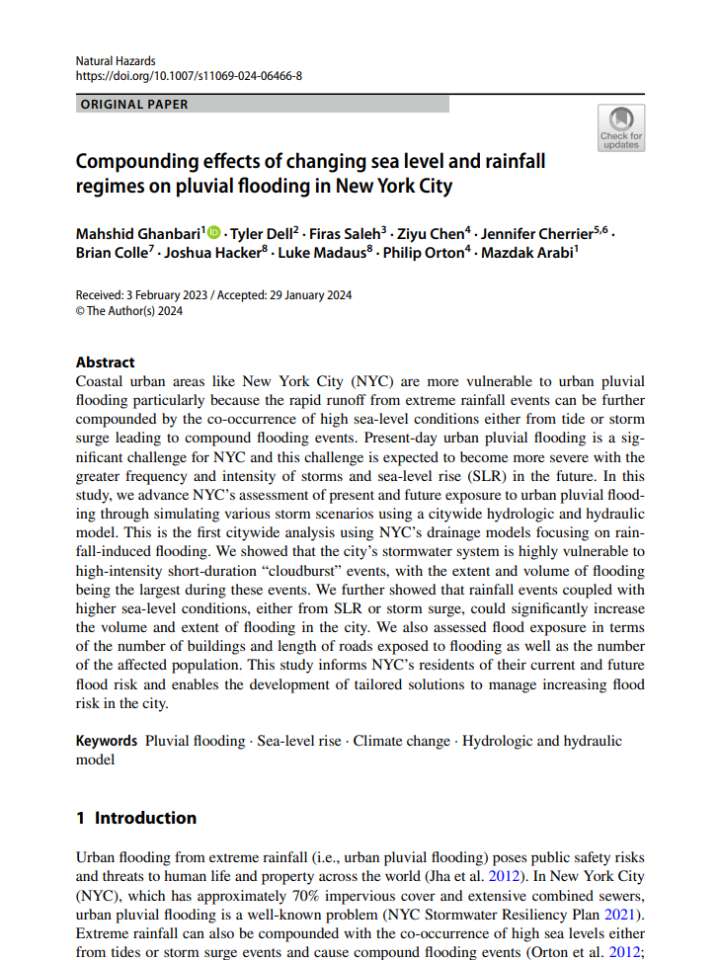Compounding effects of changing sea level and rainfall regimes on pluvial flooding in New York City
This study informs NYC’s residents of their current and future flood risk and enables the development of tailored solutions to manage increasing flood risk in the city. Coastal urban areas like New York City (NYC) are more vulnerable to urban pluvial flooding particularly because the rapid runoff from extreme rainfall events can be further compounded by the co-occurrence of high sea-level conditions either from tide or storm surge leading to compound flooding events. Present-day urban pluvial flooding is a significant challenge for NYC and this challenge is expected to become more severe with the greater frequency and intensity of storms and sea-level rise (SLR) in the future.
This publication finds the following:
- Almost 18% of NYC could experience inundation during a 1-h, 3.6 inch hr−1 rainfall event. This value could rise to 28% in the case of a 3-h, 4.3 inch hr−1 storm event.
- Increasing sea levels either from SLR and/or storm surge can lead to more extensive and severe fooding, as the NYC’s gravity-drained sewer systems become less able to drain stormwater under higher sea-level conditions.
- Underrepresented and socioeconomically disadvantaged communities were proportionally the largest group exposed to fooding in NYC under all considered storm scenarios.
Explore further
